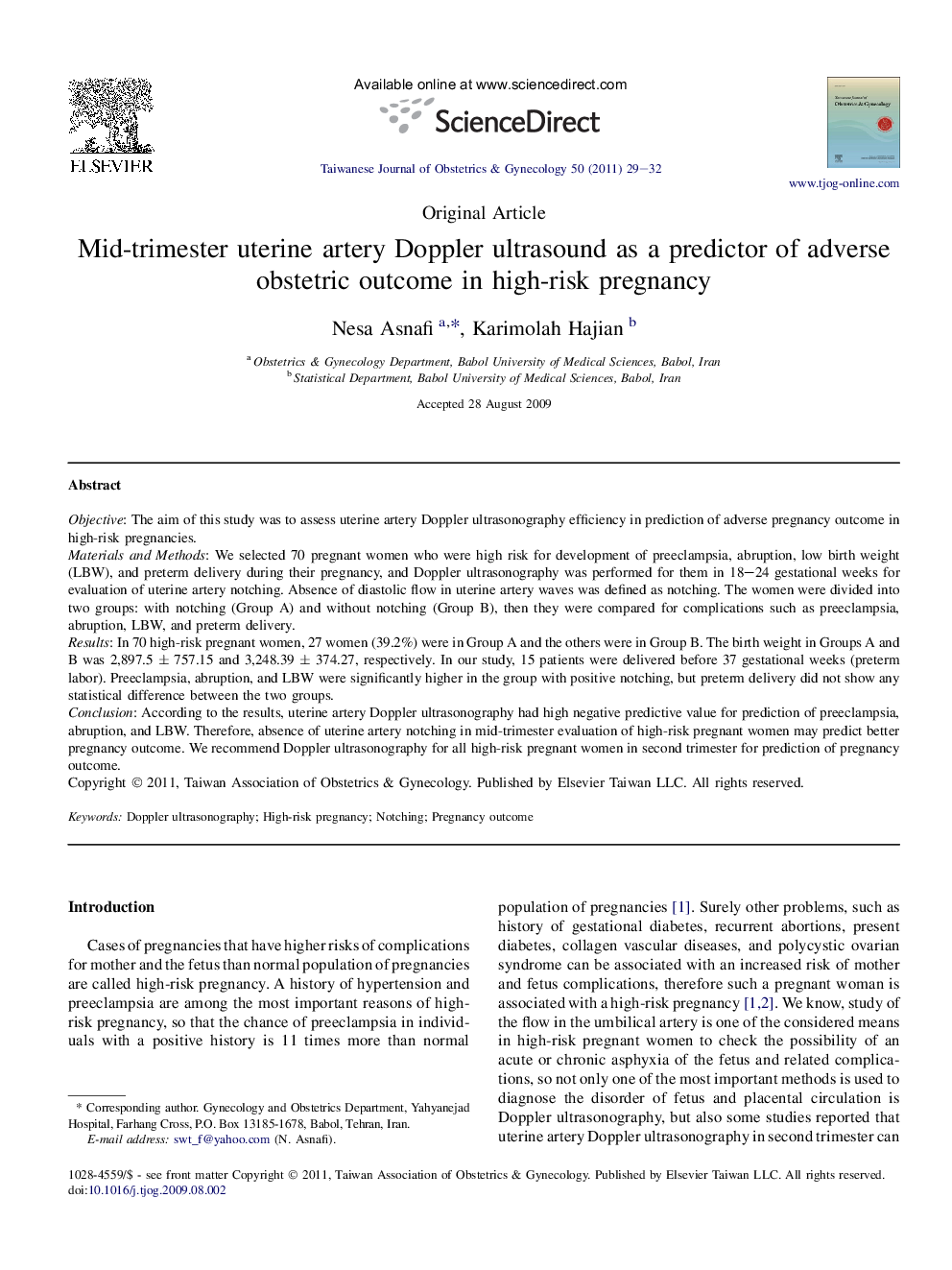| Article ID | Journal | Published Year | Pages | File Type |
|---|---|---|---|---|
| 3975722 | Taiwanese Journal of Obstetrics and Gynecology | 2011 | 4 Pages |
ObjectiveThe aim of this study was to assess uterine artery Doppler ultrasonography efficiency in prediction of adverse pregnancy outcome in high-risk pregnancies.Materials and MethodsWe selected 70 pregnant women who were high risk for development of preeclampsia, abruption, low birth weight (LBW), and preterm delivery during their pregnancy, and Doppler ultrasonography was performed for them in 18–24 gestational weeks for evaluation of uterine artery notching. Absence of diastolic flow in uterine artery waves was defined as notching. The women were divided into two groups: with notching (Group A) and without notching (Group B), then they were compared for complications such as preeclampsia, abruption, LBW, and preterm delivery.ResultsIn 70 high-risk pregnant women, 27 women (39.2%) were in Group A and the others were in Group B. The birth weight in Groups A and B was 2,897.5 ± 757.15 and 3,248.39 ± 374.27, respectively. In our study, 15 patients were delivered before 37 gestational weeks (preterm labor). Preeclampsia, abruption, and LBW were significantly higher in the group with positive notching, but preterm delivery did not show any statistical difference between the two groups.ConclusionAccording to the results, uterine artery Doppler ultrasonography had high negative predictive value for prediction of preeclampsia, abruption, and LBW. Therefore, absence of uterine artery notching in mid-trimester evaluation of high-risk pregnant women may predict better pregnancy outcome. We recommend Doppler ultrasonography for all high-risk pregnant women in second trimester for prediction of pregnancy outcome.
